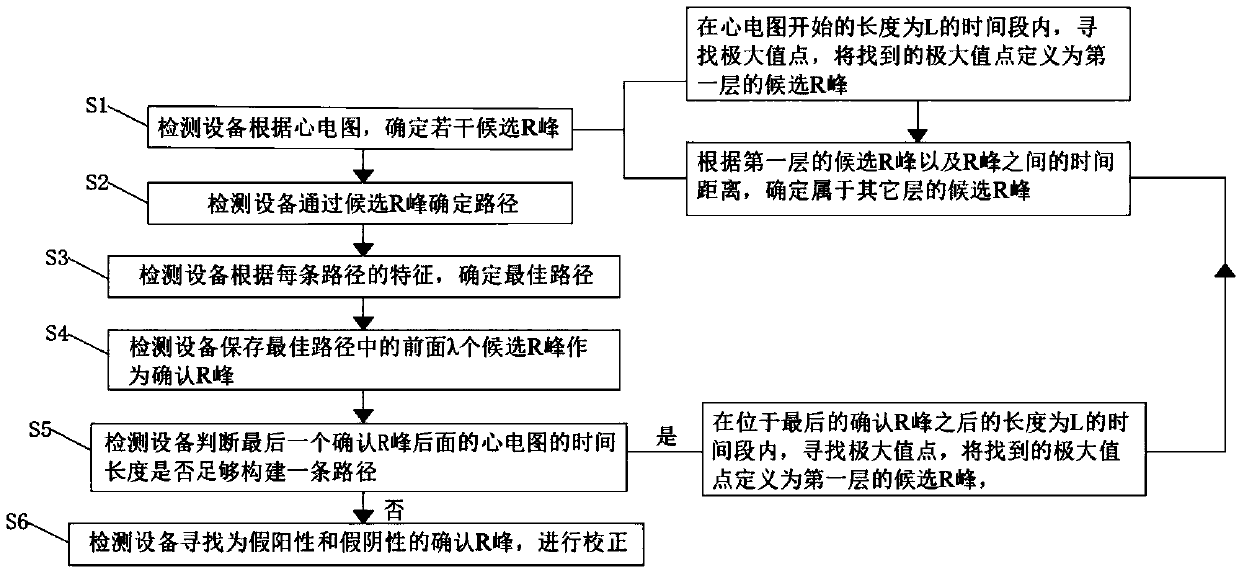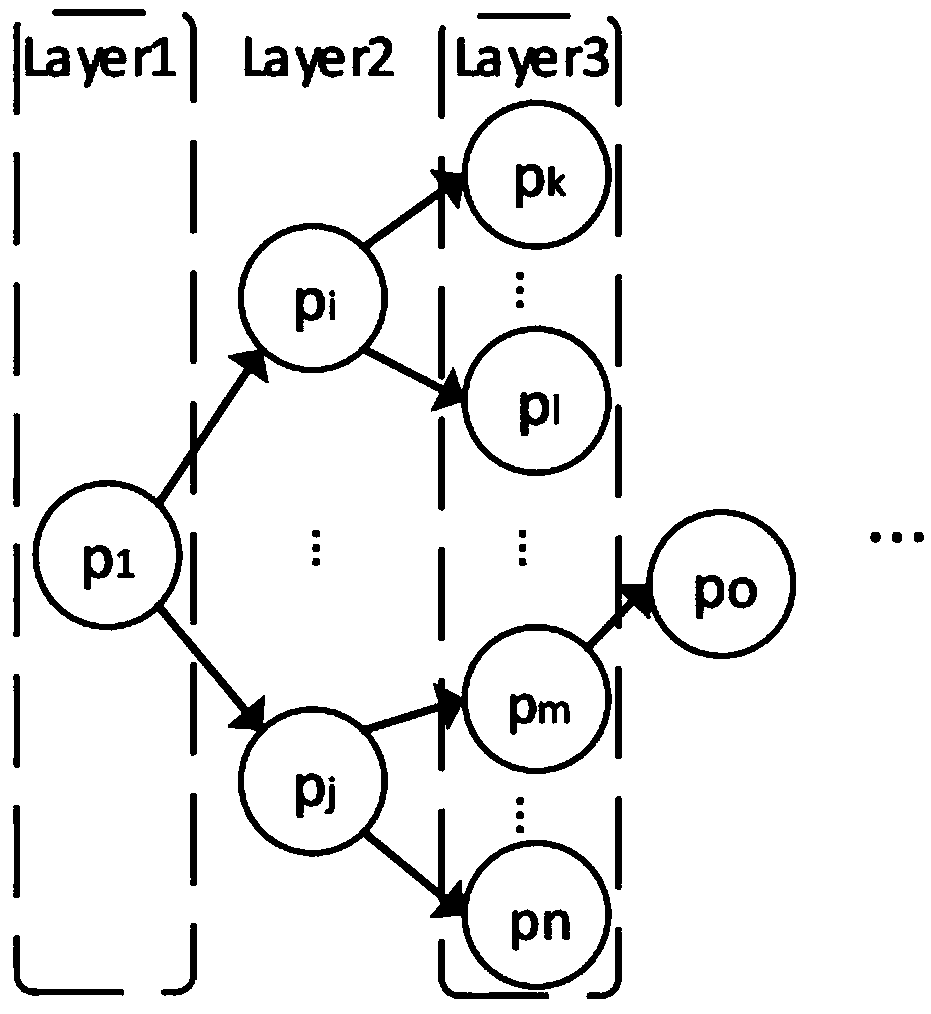Single-channel fetal heart rate monitoring method based on search tree
A fetal heart rate, single-channel technology, applied in the measurement of pulse rate/heart rate, diagnostic recording/measurement, medical science, etc., can solve problems such as poor separation
- Summary
- Abstract
- Description
- Claims
- Application Information
AI Technical Summary
Problems solved by technology
Method used
Image
Examples
Embodiment 1
[0079] like figure 1 As shown, a method for realizing single-channel fetal heart rate monitoring based on search tree comprises the following steps:
[0080] The monitoring device finds the best path based on changes in the ECG, including:
[0081] Step S1: the monitoring device determines several candidate R peaks according to the electrocardiogram;
[0082] Step S2: The monitoring device determines the path through the candidate R peak;
[0083] Step S3: The monitoring device determines the best path of the QRS wave according to the characteristics of each path.
[0084] In step S1, the following steps are included:
[0085] S11. The monitoring device searches for a maximum value point within a time period of length L from the beginning of the electrocardiogram, and defines the found maximum value point as a candidate R peak of the first layer;
[0086] S12. According to the candidate R peaks of the first layer and the time distance between the R peaks, determine the ca...
Embodiment 2
[0114] Different from Embodiment 1, this embodiment also includes the following steps after step S3:
[0115] Step S4, the monitoring device saves the first λ candidate R peaks in the best path as confirmed R peaks;
[0116] Step S5, the monitoring device judges whether the time length of the electrocardiogram behind the last confirmed R peak is enough to construct a path (that is, judges whether the time of the last confirmed R peak is greater than or equal to the path limit length); In the period of time after the R peak whose length is L, search for a maximum point, define the found maximum point as a candidate R peak of the first layer, and execute step S12.
[0117] After step S5, step S6 is also included, the monitoring equipment searches for the confirmed R peaks of false positives and false negatives, and performs correction.
[0118] When looking for all false negative and false positive points, judge the time distance RR between all confirmed R peaks and their adjac...
Embodiment 3
[0122] In order to better explain step S5, the following example is cited in this embodiment. In step S3, the time points of candidate R peaks of each layer that have obtained the best path are 0.2s, 0.8s, 1.4s, 2.0s, 2.6s , since the λ value is 2, only the first two candidate R-peaks, namely the candidate R-peaks at time points 0.2s and 0.8s, are selected as the confirmation R-peaks. However, since the last time point for confirming the R peak is 0.8s, and the time span of the ECG is 30s, that is, there are still 29.2s in the following time, the time is obviously enough, which is much longer than the path limit length. For this reason, it is necessary to search for the R peak within a period of time after 0.8s in the electrocardiogram, perform a new round of optimal path selection, and search for more confirmed R peaks.
PUM
 Login to View More
Login to View More Abstract
Description
Claims
Application Information
 Login to View More
Login to View More - R&D
- Intellectual Property
- Life Sciences
- Materials
- Tech Scout
- Unparalleled Data Quality
- Higher Quality Content
- 60% Fewer Hallucinations
Browse by: Latest US Patents, China's latest patents, Technical Efficacy Thesaurus, Application Domain, Technology Topic, Popular Technical Reports.
© 2025 PatSnap. All rights reserved.Legal|Privacy policy|Modern Slavery Act Transparency Statement|Sitemap|About US| Contact US: help@patsnap.com



